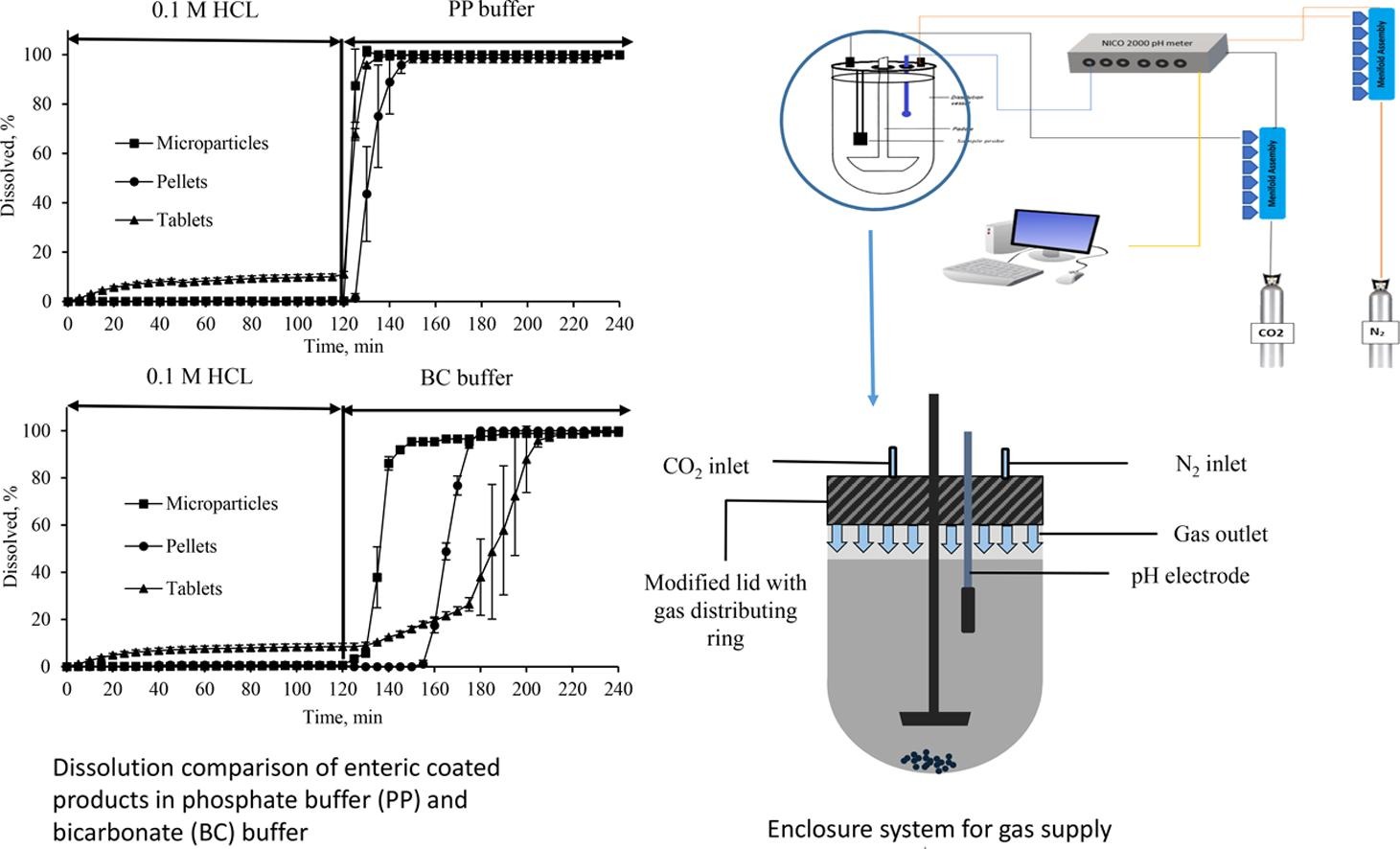Regulating the pH of bicarbonate solutions without purging gases: Application to dissolution testing of enteric coated tablets, pellets and microparticles

Dissolution media based on bicarbonate buffers closely mimic the environment of intestinal fluids and thus improve in vitro in vivo correlation compared to phosphate buffers. Purging gases into the medium is used as a method to stabilise bicarbonate buffers; however, this causes issues due to the disturbance of the hydrodynamics in the dissolution vessel. The aim of this study was to develop a novel system to regulate and stabilise the pH of bicarbonate buffers without purging gases for the application of dissolution testing of enteric coated products. A novel enclosure system was applied to the USP II dissolution vessel to supply N2 and CO2 gases above the dissolution medium without purging into the solution. Drug release from enteric coated predinisolone microparticles (216.9 µm), pellets (1.25 mm) and commercially available tablets was determined in 0.1 M HCl and subsequently in pH 6.8 phosphate buffer or pH 6.2–6.8 bicarbonate buffers generated by titration of the acidic medium in situ using USP II apparatus. Supplying N2 at 3–4 bar and CO2 at 0.1 bar were able to increase the pH of the bicarbonate buffer from pH 6.2 to 6.8 within 45 min and subsequently stabilise the medium pH at 6.8 ± 0.05 pH units. Enteric coated microparticles showed much faster drug release in the physiological bicarbonate buffers than tablets and pellets. The novel bicarbonate-based dissolution system moves forward the application of the physiological bicarbonate buffers for testing pharmaceutical products to meet compendial requirements. Continue on application dissolution testing of enteric coated tablets, pellets and microparticles
Keywords: Enteric coating, Biorelevant, DissolutionIn vitro testing, Bicarbonate, Cellets 100, Cellets 1000, Hypromellose (Methocel™ E5), Talc, Methacrylate polymer, Triethyl citrate (TEC), magnesium stearate, glycerol monostearate (GMS)
Read more on Talc as a pharmaceutical excipient here:


